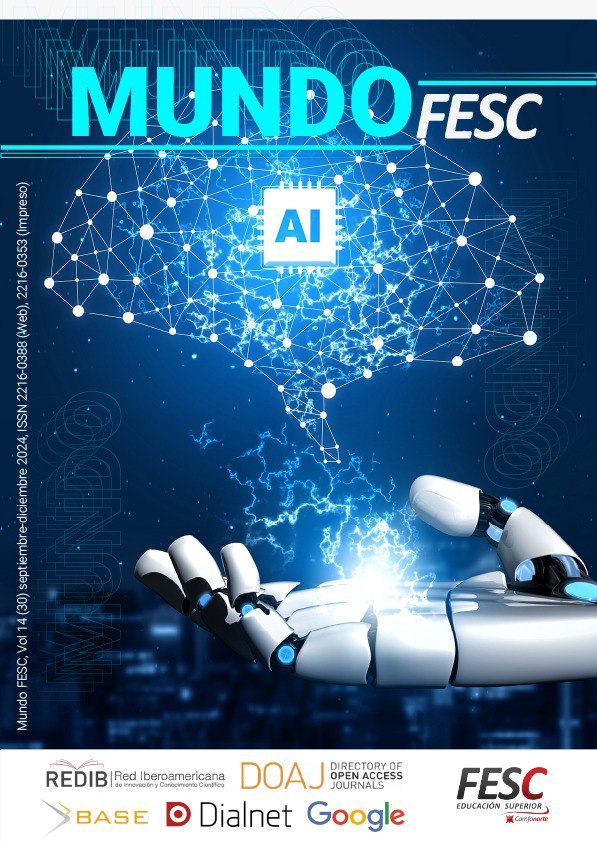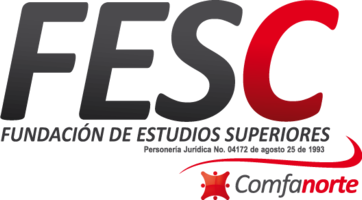Knowledge-based system to encourage recycling
DOI:
https://doi.org/10.61799/2216-0388.1613Keywords:
Recycling, Environmental culture, Semantic web, Pollution, Recyclable material.Abstract
The culture of recycling is a very important issue in
current times since we live in a world where we have not
adopted a conscience to take care of the environment,
since it requires people to take a stand on what is
happening in the environment. The use of technology
is shown as an alternative to help the population in this
task, and the implementation of artificial intelligence
techniques bring innovation and greater options for
possible solutions. The main objective of the research
is to develop a knowledge-based system for recycling
classification, using artificial intelligence techniques
supported by the semantic web. The purpose of this
system is to generate an impact on the recycling
culture, and to do so, there are specific objectives,
which are based on the stages of the knowledgebased systems methodology proposed by Rolston.
In order to better address the problem, a systematic
mapping was carried out to gather information on the
use of technology and artificial intelligence techniques
to encourage recycling culture. Initially, 255 research
papers were found, but after applying filters and
performing a detailed review, 50 documents relevant
to the research were found.
Downloads
References
[1] R. Sanmartín, S. Gladis, L. Zhigue, A. Rosalía, C. Alaña, y T. Patriciav, «EL RECICLAJE: UN NICHO DE INNOVACIÓN Y EMPRENDIMIENTO CON ENFOQUE AMBIENTALISTA», Revista Universidad y Sociedad, 2017, [En línea]. Disponible en: http://scielo.sld.cu/scielo.php?script=sci_arttext&pid=S2218-36202017000100005&lng=es&tlng=es
[2] A. Reyes, N. Pellegrini, y R. Reyes, «Recycling as alternative for solid waste management in Minas of Baruta, estado Miranda, Venezuela», 2015, [En línea]. Disponible en: https://www.redalyc.org/articulo.oa?id=376144131008
[3] Ecoembes, «Materiales reciclables y su uso», Ecoembes, 8 de septiembre de 2021. https://ecoembesdudasreciclaje.es/materiales-reciclables-y-su-uso/
[4] M. Ismail y A. Ghazali, «IoT Green-Bin: The Development of a Self-sorting Recycle Bin System», Human Engineering Symposium, HUMENS 2021, p. 9, 2021, doi: 10.1007/978-981-16-4115-2_37. DOI: https://doi.org/10.1007/978-981-16-4115-2_37
[5] M. Wahab, S. Tay, A. Abdull, A. Mohamed, y M. Mahinderjit, «Smart Waste Management System», 12th National Technical Seminar on Unmanned System Technology, NUSYS 2020, p. 12, 2022, doi: 10.1007/978-981-16-2406-3_55. DOI: https://doi.org/10.1007/978-981-16-2406-3_55
[6] N. Leeabai et al., «The effects of color preference and noticeability of trash bins on waste collection performance and waste-sorting behaviors», Waste Management, p. 11, dic. 2020, doi: 10.1016/j.wasman.2020.12.010. DOI: https://doi.org/10.1016/j.wasman.2020.12.010
[7] K. Petersen, R. Feldt, S. Mujtaba, y M. Mattson, «Systematic Mapping Studies in Software Engineering – ScienceOpen», presentado en 12th International Conference on Evaluation and Assessment in Software Engineering (EASE) (EASE), jun. 2008. doi: 10.14236/ewic/EASE2008.8. DOI: https://doi.org/10.14236/ewic/EASE2008.8
[8] B. Kitchenham y S. Charters, «Guidelines for performing Systematic Literature Reviews in Software Engineering», enero de 2007. Accedido: 10 de diciembre de 2022. [En línea]. Disponible en: https://www.researchgate.net/publication/302924724_Guidelines_for_performing_Systematic_Literature_Reviews_in_Software_Engineering
[9] G. Tebes, D. Peppino, P. Becker, y L. Olsina, «Proceso para revisión sistemática de literatura y mapeo sistemático», presentado en XX Simposio Argentino de Ingeniería de Software (ASSE 2019) - JAIIO 48 (Salta), may 2020. Accedido: 10 de diciembre de 2022. [En línea]. Disponible en: http://sedici.unlp.edu.ar/handle/10915/135071
[10] R. Wieringa, N. Maiden, N. Mead, y C. Rolland, «Requirements engineering paper classification and evaluation criteria: A proposal and a discussion — University of Twente Research Information», mar. 2006, doi: 10.1007/s00766-005-0021-6. DOI: https://doi.org/10.1007/s00766-005-0021-6
[11] J. Catlin, J. Leonhardt, Y. Wang, y R. Manuel, «Landfill or Recycle? Pro-Environmental Receptacle Labeling Increases Recycling Contamination», Journal of consumer Psychology, p. 8, oct. 2021, doi: 10.1002/jcpy.1216. DOI: https://doi.org/10.1002/jcpy.1216
[12] Q. Jiang, T. Izumi, y H. Yoshida, «The effect of recycling bin design on PET bottle collection performance», jul. 2019, doi: doi.org/10.1016/j.wasman.2019.05.054. DOI: https://doi.org/10.1016/j.wasman.2019.05.054
[13] I. Ogiri, F. Sidique, y M. Talib, «Encouraging recycling among households in Ma-laysia: Does deterrence matter?», 2019, Accedido: 8 de diciembre de 2022. [En línea]. Disponible en: https://www-scopus-com.sibdigital.ufpso.edu.co/record/display.uri?eid=2-s2.0-85064569451&origin=resultslist&sort=plf-f&src=s&st1=10.1177%2f0734242X19842328&sid=02c129c8655cdb52fbc462edc2f00d2d&sot=b&sdt=b&sl-=29&s=ALL%2810.1177%2f0734242X19842328%29&relpos=0&citeCnt=10&search-Term=
[14] K. Keramitsoglou y K. Tsagarakis, «Public Participation in Designing the Recycling Bins to Encourage Recycling», sustainability, p. 17, abr. 2018, doi: 10.3390/su10041240. DOI: https://doi.org/10.3390/su10041240
[15] J. Zhang, L. Zhao, y S. Hu, «Visualizing recycling: Promoting recycling through mental simulation», nov. 2021, doi: 10.1016/j.resconrec.2021.105783. DOI: https://doi.org/10.1016/j.resconrec.2021.105783
[16] F. Okonta y M. Mohlalifi, «Assessment of factors affecting source recycling among metropolitan Johannesburg residents - ScienceDirect», 2020, Accedido: 8 de diciem-bre de 2022. [En línea]. Disponible en: https://www.sciencedirect.com/science/arti-cle/abs/pii/S0956053X20300647
[17] L. Pelonero, A. Fornaia, y E. Tramontana, «From Smart City to Smart Citizen: Rewarding Waste Recycle by Designing a Data-Centric IoT based Garbage Collection Service», 6th IEEE International Conference on Smart Computing, SMARTCOMP 2020, pp. 380-385, sep. 2020, doi: 10.1109/SMARTCOMP50058.2020.00081. DOI: https://doi.org/10.1109/SMARTCOMP50058.2020.00081
[18] A. Torres-Toukoumidis, V. Robles-Bykbaev, y M. Cajamarca, «Recycling process through 3D videogame technologies for web platforms in Latin-American context», 2020 IEEE International Symposium on Technology and Society, ISTAS 2020, 2020, doi: 10.1109/ISTAS50296.2020.9462179. DOI: https://doi.org/10.1109/ISTAS50296.2020.9462179
[19] M. Makhseed, A. Salam, S. El-Aswad, y S. Esmaeili, «Design and Assembly of A Smart Recycling Bin», 2021 3rd International Congress on Human-Computer In-teraction, Optimization and Robotic Applications (HORA), jun. 2021, doi: 10.1109/HORA52670.2021.9461315. DOI: https://doi.org/10.1109/HORA52670.2021.9461315
[20] D. Gibovic y A. Bikfalvi, «Incentives for Plastic Recycling: How to Engage Citizens in Active Collection. Empirical Evidence from Spain», Recycling, p. 20, abr. 2021, doi: 10.3390/recycling6020029. DOI: https://doi.org/10.3390/recycling6020029
[21] M. Maksimovic, «Leveraging Internet of Things to Revolutionize Waste Manage-ment», International Journal of Agricultural and Environmental Information Systems, p. 13, oct. 2018, doi: 10.4018/IJAEIS.2018100101. DOI: https://doi.org/10.4018/IJAEIS.2018100101
[22] A. Gonzales, P. Chamoso, y R. Casado-Vara, «Internet of Things Platform to En-courage Recycling in a Smart City», en Internet of Things Platform to Encourage Re-cycling in a Smart City, ene. 2019. doi: 10.1016/B978-0-12-803581-8.10726-X. DOI: https://doi.org/10.1016/B978-0-12-803581-8.10726-X
[23] R. Venushini, N. Yogan, y R. Kanesara, «A Cloud-Based Implementation of IoT System in Recycle Industry», presentado en BDIOT 2019: Proceedings of the 3rd International Conference on Big Data and Internet of Things, ago. 2019. doi: 10.1145/3361758.3361764. DOI: https://doi.org/10.1145/3361758.3361764
[24] O. Gaggi, F. Meneghello, C. Palazzi, y G. Pante, «Learning how to recycle waste using a game», sep. 2020, doi: 10.1145/3411170.3411251. DOI: https://doi.org/10.1145/3411170.3411251
[25] M. Srilatha, C. Abhinav, M. Balaram, y A. Sanjana, «Smart Monitoring and Collec-tion of Garbage System Using Internet of Things», presentado en 2021 Third Inter-national Conference on Intelligent Communication Technologies and Virtual MobileNetworks (ICICV), Tirunelveli, India, mar. 2021. doi: 10.1109/ICICV50876.2021.9388438. DOI: https://doi.org/10.1109/ICICV50876.2021.9388438
[26] C. Kontokosta, B. Hong, y N. Johnson, «Using machine learning and small area estimation to predict building-level municipal solid waste generation in cities», jul. 2018, doi: 10.1016/j.compenvurbsys.2018.03.004. DOI: https://doi.org/10.1016/j.compenvurbsys.2018.03.004
[27] A. Marcus, K. Pradeep, L. Zhenyang, S. Irvin, y H. Jong, «Robots Teaching Recy-cling: Towards Improving Environmental Literacy of Children», HRI ’20: Companion to the 2020 ACM/IEEE International Conference on Human-Robot Interaction, 2020, doi: 10.1145/3371382.3379462. DOI: https://doi.org/10.1145/3371382.3379462
[28] K. Acharekar, P. Khedekar, J. Dsouza, y S. Vaidya, «Machine Learning based Recy-Click: Recycle At A Click», jun. 2020. doi: 10.1109/ICOEI48184.2020.9142933. DOI: https://doi.org/10.1109/ICOEI48184.2020.9142933
[29] J. Cagurungan, R. Factuar, J. Reyes, y D. Torres, «Artificial Neural Network on Solid Waste Generation Based on Five (5) Categories Within Barangay Sagrada Fa-milia in Hagonoy, Bulacan», presentado en 2021 IEEE 13th International Conferen-ce on Humanoid, Nanotechnology, Information Technology, Communication and Control, Environment, and Management (HNICEM), nov. 2021. doi: 10.1109/HNI-CEM54116.2021.9731914. DOI: https://doi.org/10.1109/HNICEM54116.2021.9731914
[30] S. Rabano, M. Cabatuan, y E. Sybingco, «Common Garbage Classification Using MobileNet», presentado en 2018 IEEE 10th International Conference on Humanoid, Nanotechnology, Information Technology,Communication and Control, Environment and Management (HNICEM), nov. 2018. doi: 10.1109/HNICEM.2018.8666300. DOI: https://doi.org/10.1109/HNICEM.2018.8666300
Downloads
Published
Issue
Section
License
Copyright (c) 2024 Mundo FESC Journal

This work is licensed under a Creative Commons Attribution-NonCommercial 4.0 International License.






